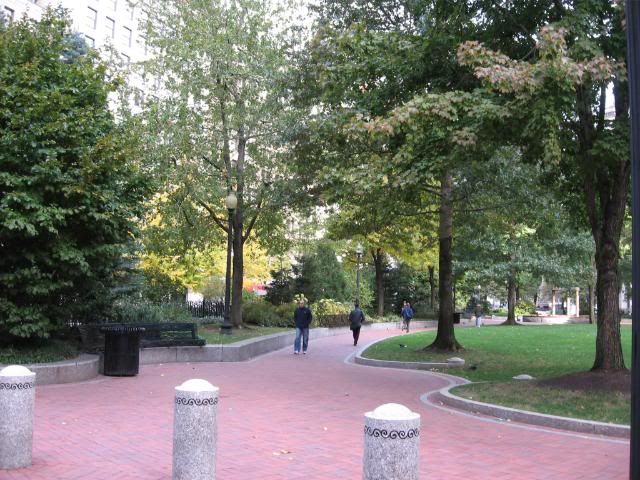Why Green/Sustainable Hospitals ?
> The American Hospitals Association has estimated that approximately Six thousand Six hundred tonnes of waste is generated by hospitals per day.
> Hospitals generate hazardous and non-hazardous waste, air emissions, and waste-water
that contribute to air, water, and soil pollution.
> Hospitals are Energy Intensive buildings and single largest users of Chemicals.
Thus, by implementing an Green/Sustainable management systems, healthcare facilities can prevent pollution, and analyze and potentially address the Ecological impacts of their services.
What are the Factors that contribute to the Environmental Impact of a Hospital ? When comparing Ecological footprints of different hospitals the following factors come into picture -
> Size of the Hospital,Number of Beds,Age of the Establishment;
> Types of Medical treatment provided;
> Types of Research and Teaching conducted;
> Third party vendors,Outsourcing of Services
> Level of Infrastructure development for the local community
In general, large hospitals consume more resources and produce more emissions than small
ones. However, as hospitals add beds their per-bed water and energy demands also
increases.
What are the Key areas for Potential Improvements ?
> Hazardous Substances
Some Hazardous substances of potential risk are - heavy metal based compound containing Silver,lead,copper and cadmium ; reactive and explosive substances such as Azides and Peroxide compounds such as Perchloric acids; Anesthesia Gases and Formaldehyde.
For Receiving, Handling, Storing and Disposal written procedures must be present.Staff should be trained on how to safely use potentially hazardous substances. Moreover, highly Hazardous Substances such as Benzene,Mercury etc,can often be replaced with less Hazardous substances such as Toulene or Xylene.
> Waste Management
The prime criteria for Waste management should be Avoidance ->Re-Use ->Recycling -> Proper Disposal, in the same order. For example, establishing a Surplus Usage program between Hospitals or Different Business facilities can help in Usage of Surplus Chemicals between the organizations. Moreover Wastes such as Paper,Card boards,Scrap Metals,Electronic Scraps,textiles,Office left overs can be Recycled and Re-used. Recyclable materials should be collected in areas where they accumulate and then delivered to central storage areas to be prepared for transportation.
> Energy Management
As Hospitals use most of the Energy Guzzling equipment's such as Air Conditioners,lot of energy is wasted. The air-conditioning services and indoor lighting account for about 60 per cent and 20 per cent respectively of total electricity consumption. The Energy Management team should - Audit Energy Usage;Identify Areas and Equipment's consuming Maximum Energy;Development Energy Management plan and Implement it. Combined heat and power systems can reduce energy use by simultaneously generating electricity (and/or mechanical energy) and thermal energy. They recover waste heat and reduce energy use. Energy Efficient lighting methodology can be used such as replacing g incandescent (bulbs) with fluorescent lamps;Solar panels can greatly reduce the amount of fossil fuel used.
> Emission Management
Emissions caused by Sterilizers such as Ethylene Oxide gas should be minimized.Sterilization using ethylene oxide gas, and formaldehyde gas is environmentally hazardous, and a health risk for employees.
Emissions caused by Anesthetic Gases such as Nitrous Oxide, Haloethane reacts in the stratosphere with atomic oxygen to form NOx which, in turn, breaks down Ozone. Emissions levels by usage of such compounds should be regularly checked so as to prevent Non -Controlled Emissions such as through leakages etc.
Emissions caused by Incinerators include Dioxins, toxic ash residue that affect the local environment. Such facilities should be built with inbuilt treatment plants so as to control the emission discharge.
What are the Key Features of Environmental Management System for Health Care Facilities ?
A healthcare facility should commit to improving its environmental performance by encouraging all employees to actively strive to reduce pollution, improve performance and cut costs.
Using an EMS a Health care Facility can -
> Identify and Reduce Emission problems,
> Reduce energy, water and waste disposal costs,
> Control the Handling of Hazardous Substances,
> Comply with the Applicable regulations and law,
> Reduce operating costs
> Conduct Environmental Friendly Purchase and Procurement
Conclusion
Thus, to become a Green Health Care facility involves many aspects such as Green Building design, Energy Efficiency Plan,Hazardous Substance and Waste Management. LEEDS provide internationally recognized certification system for Green Facilities. Hospitals should strive for such established platforms through different levels of certifications - Platinum,Silver and Gold. It is administered that instead of Opting for Cost Intensive Green Features, Hospitals opt start off with Smaller initiatives that show immediate results and then build on their success.






